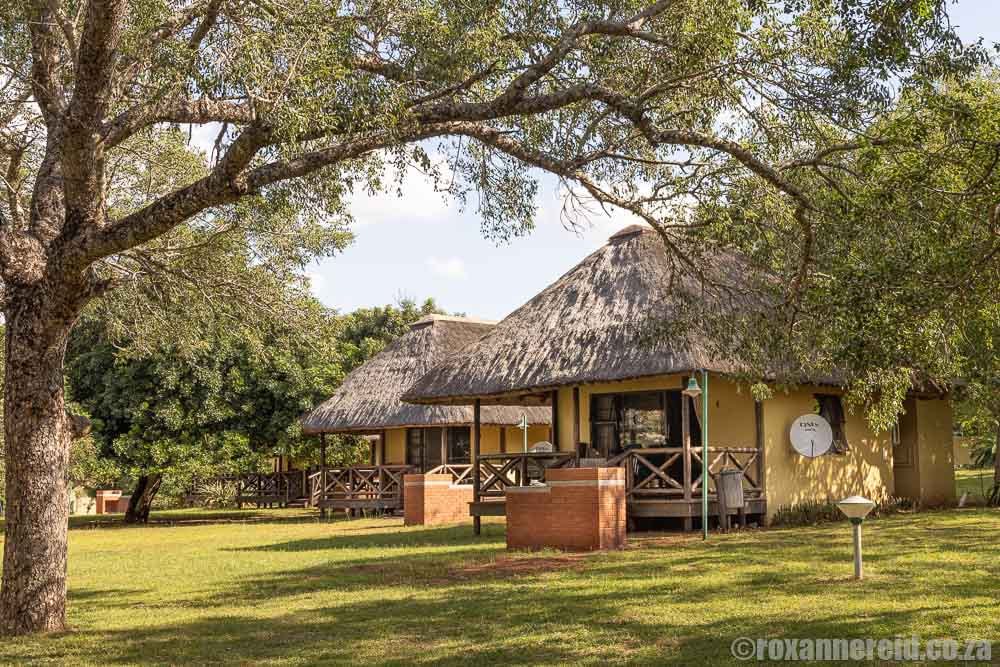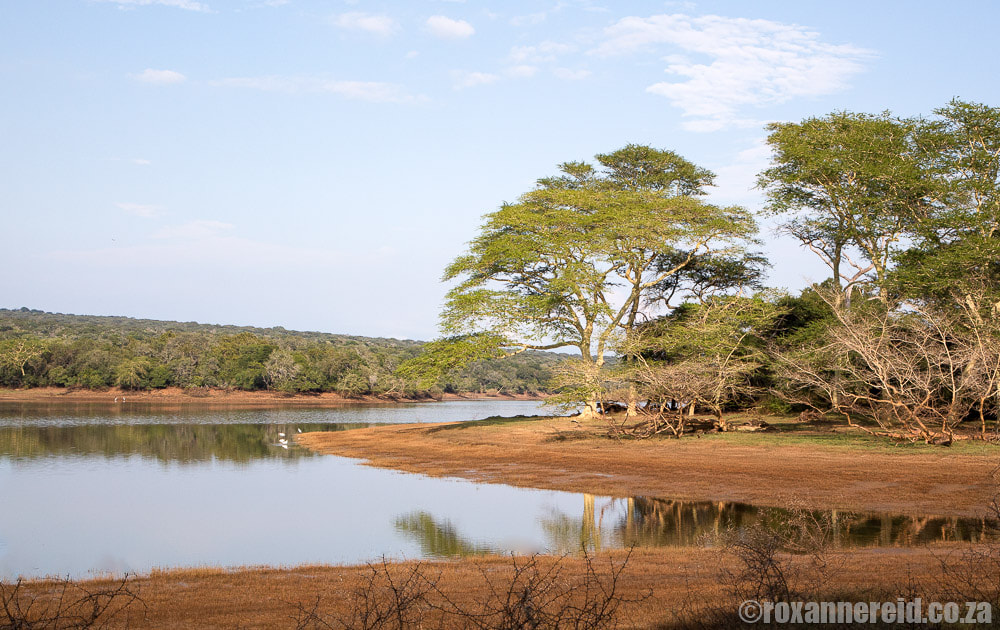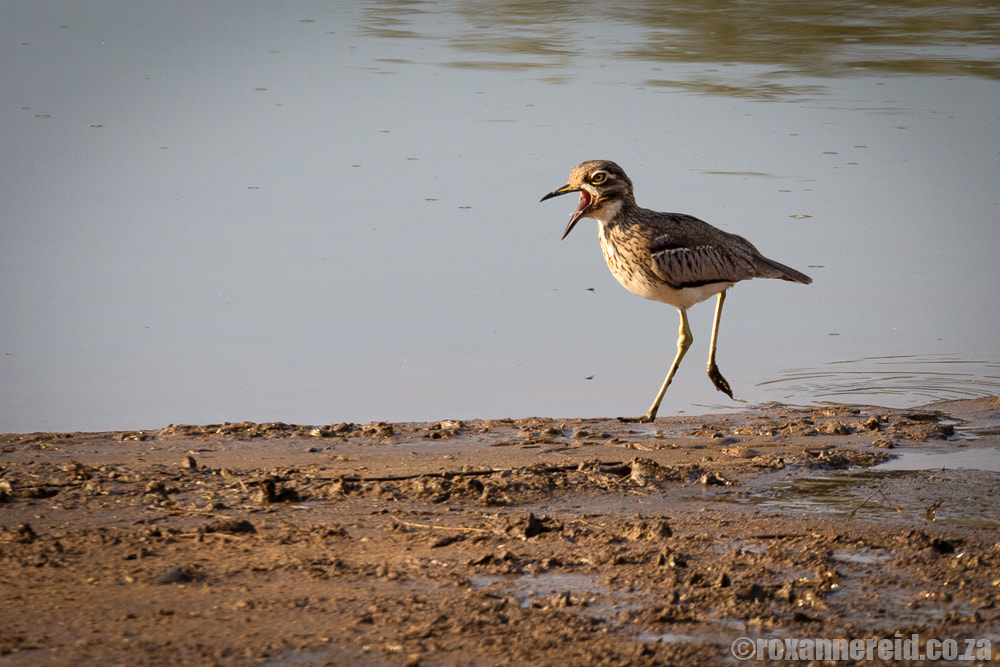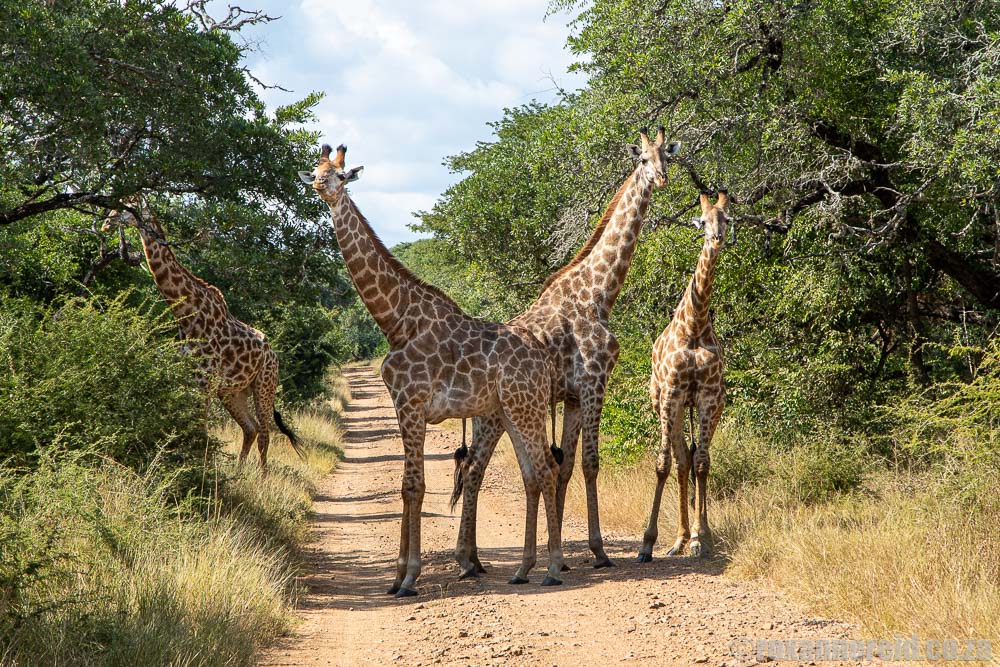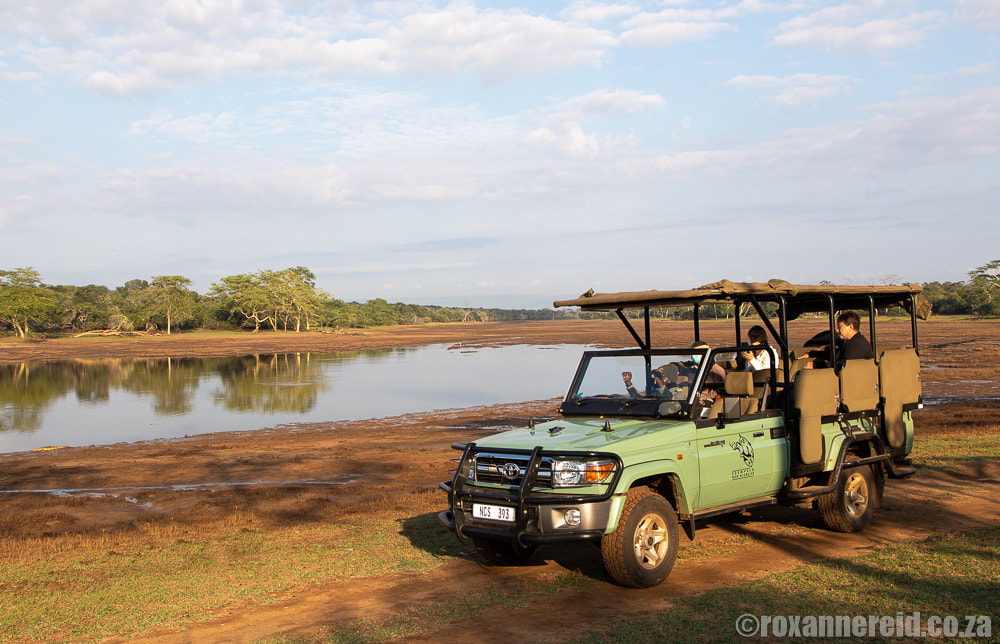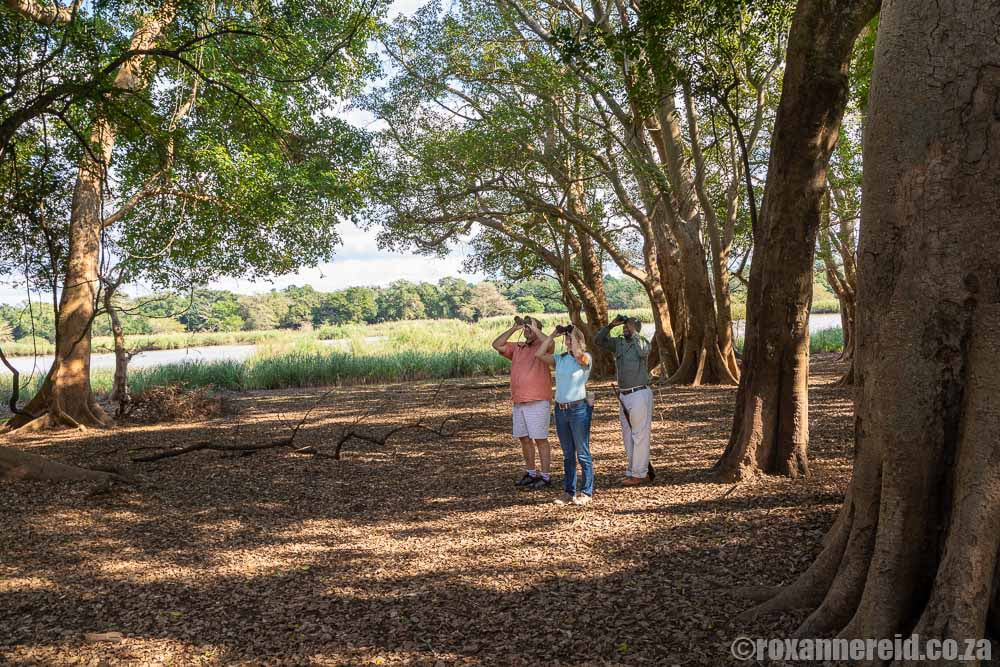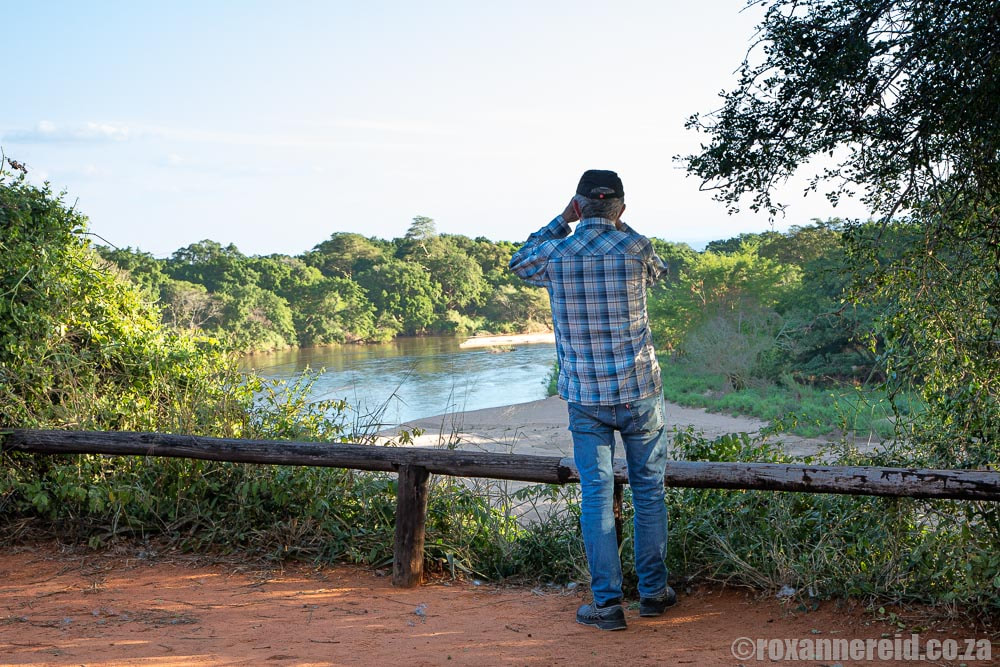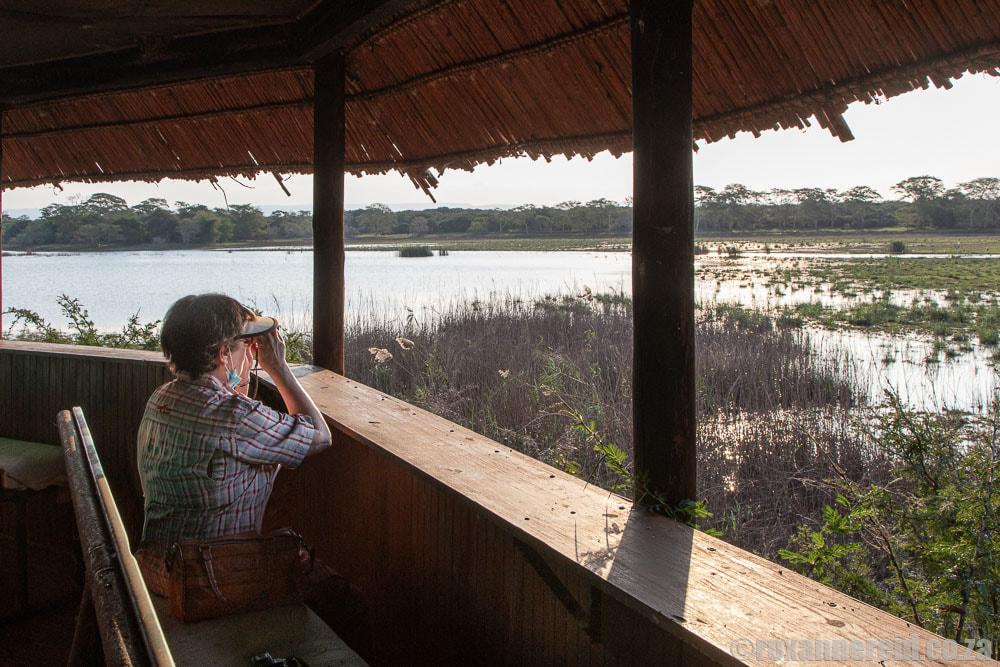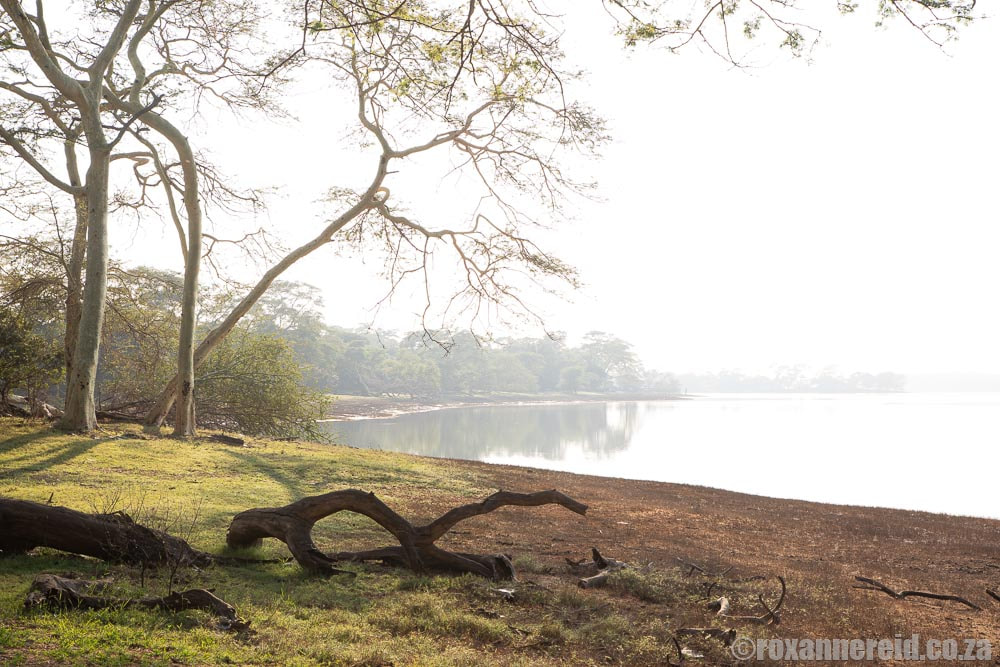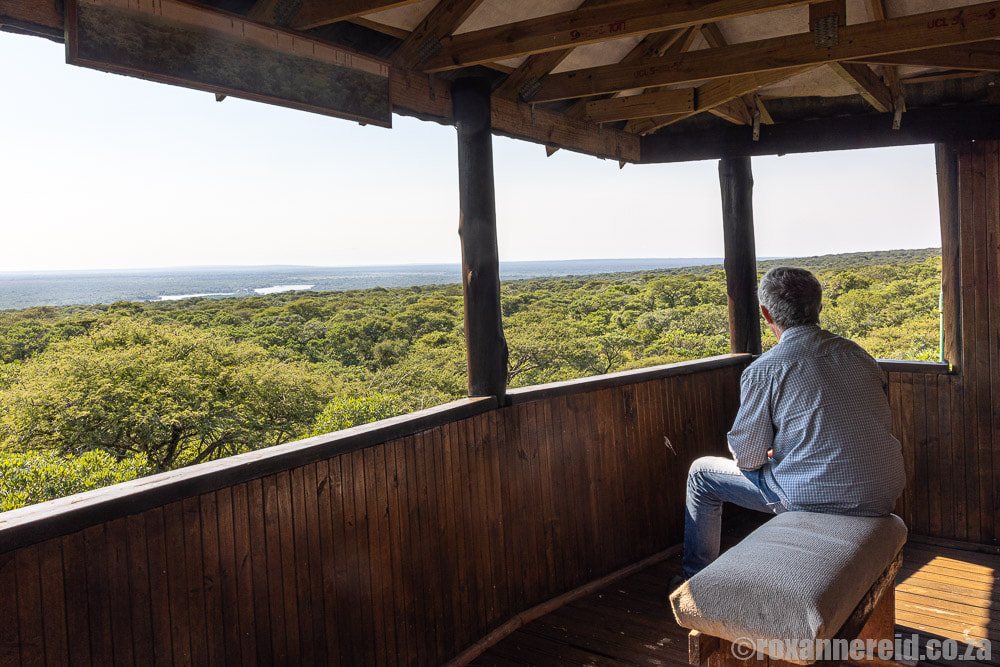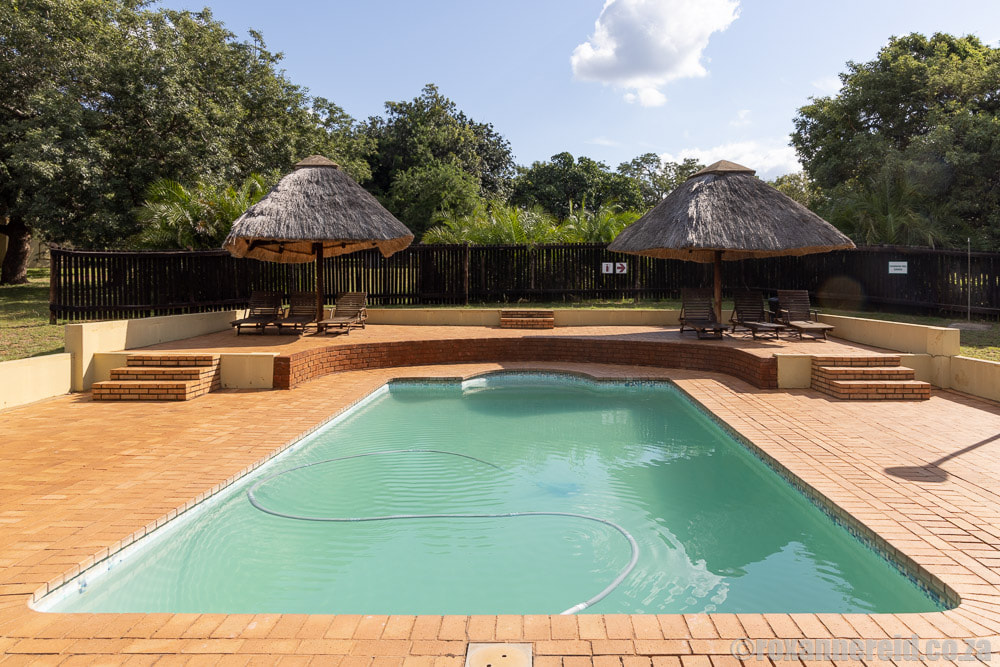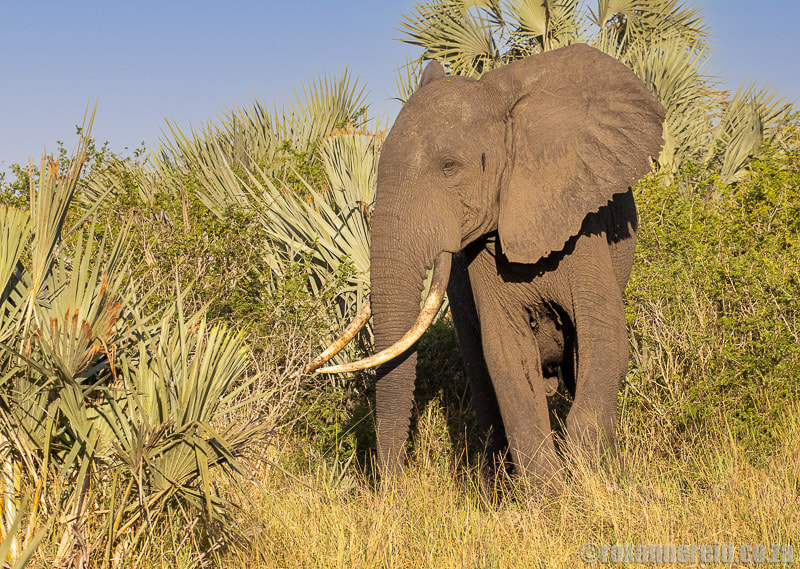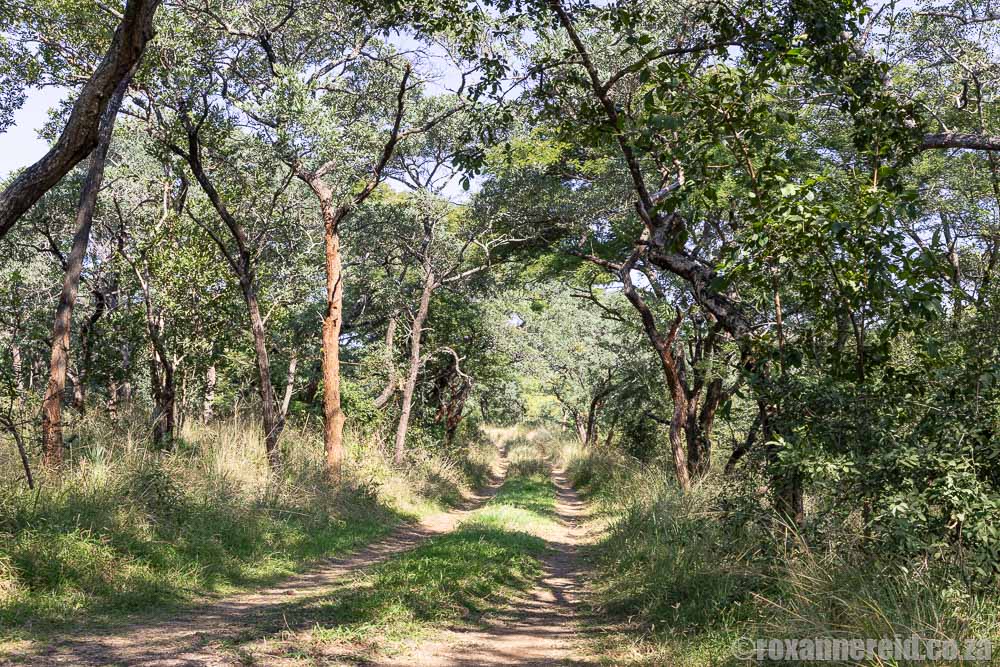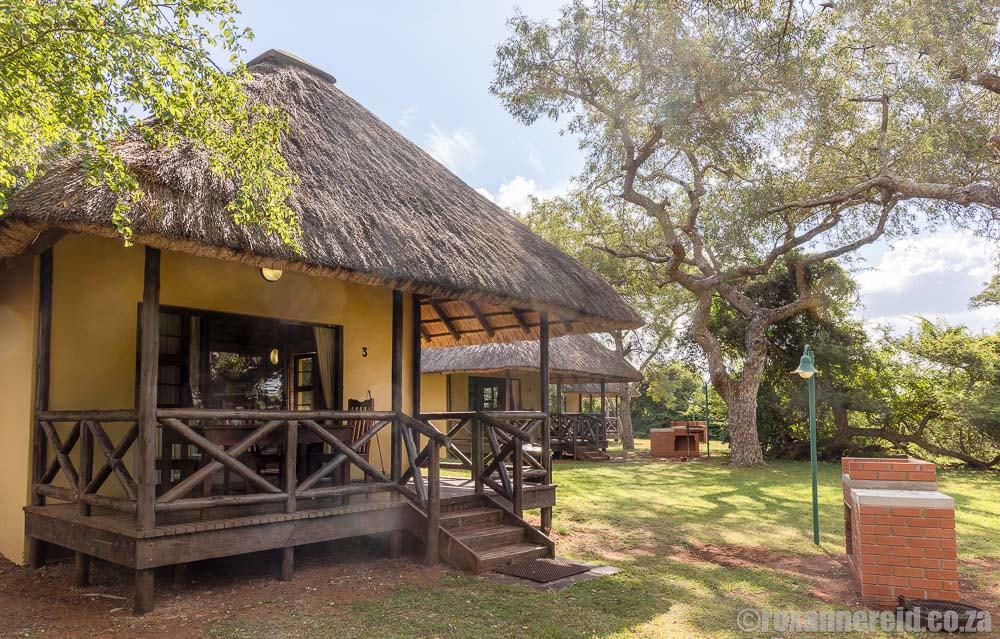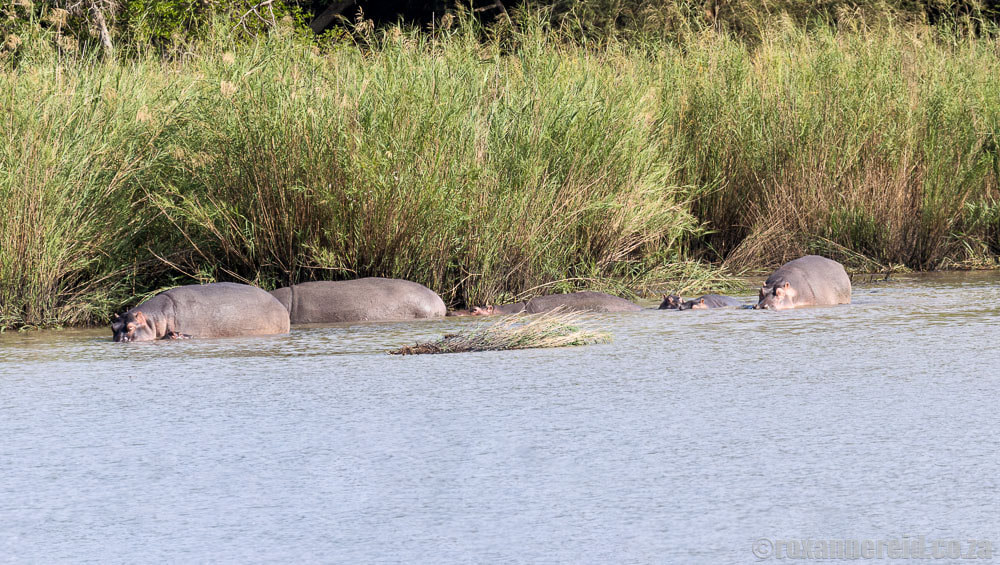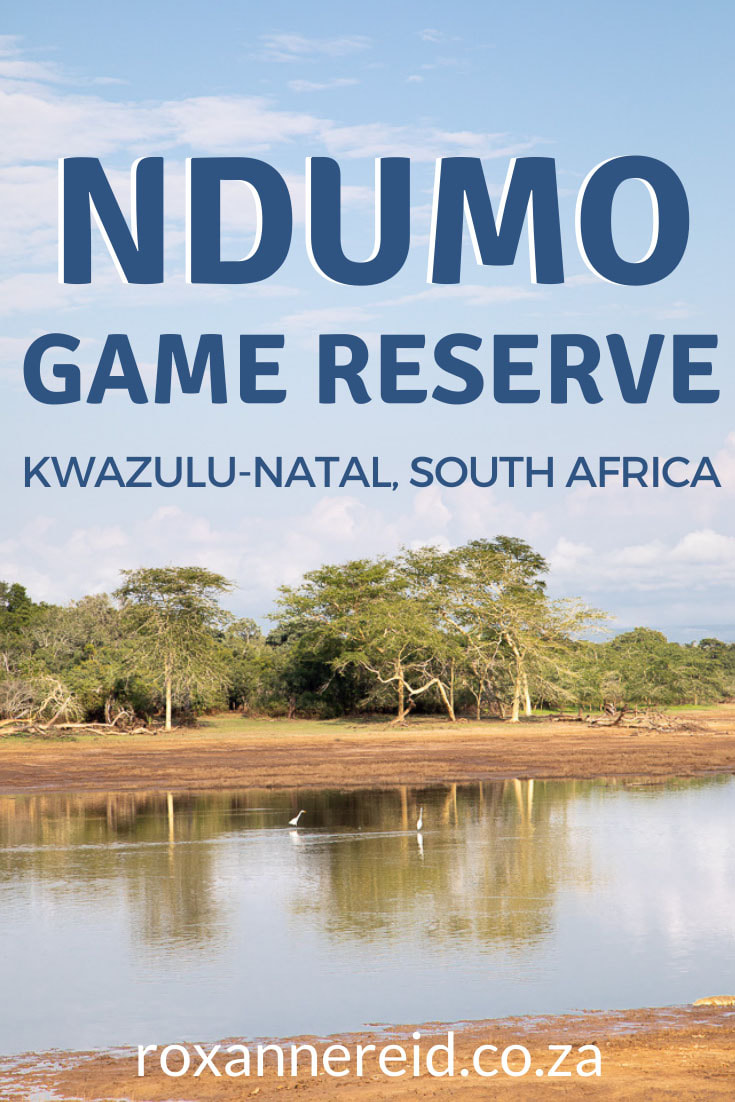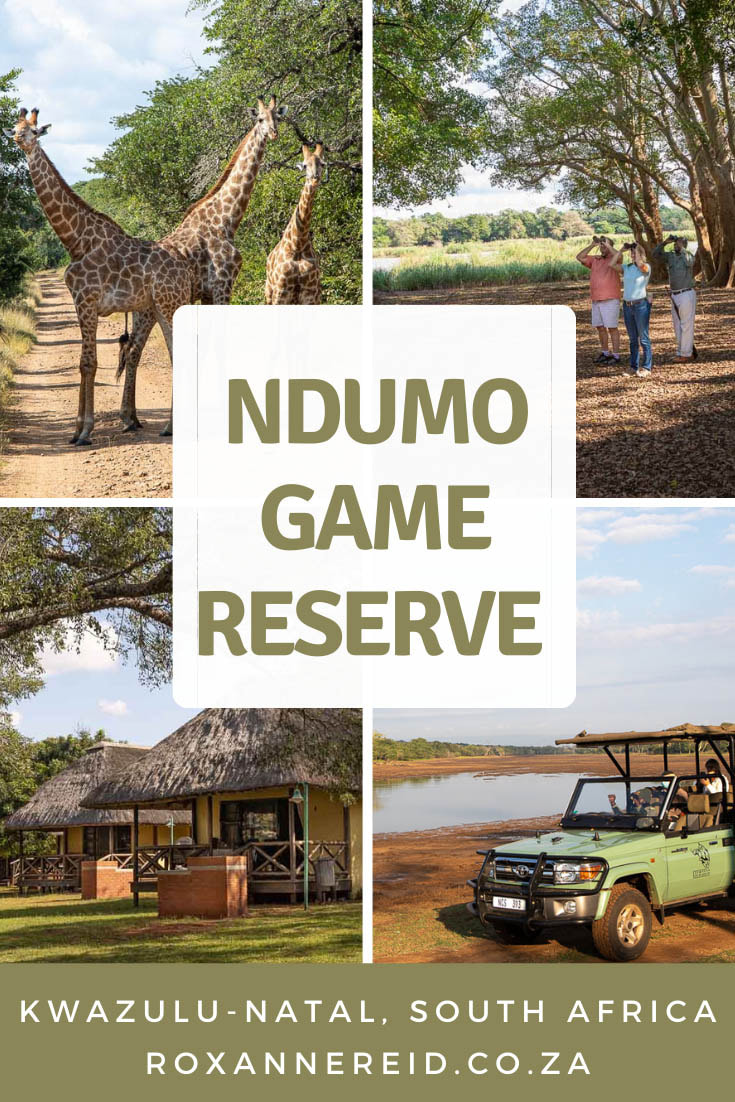By Roxanne Reid
If you’re a nature lover and seeker of birds, you simply must visit Ndumo Game Reserve in Maputaland on the border between South Africa and Mozambique. Find out everything you need to know about things to do in Ndumo, its roads, landscapes, animals, trees and conservation challenges, as well as its accommodation and campsite.
If you’re a nature lover and seeker of birds, you simply must visit Ndumo Game Reserve in Maputaland on the border between South Africa and Mozambique. Find out everything you need to know about things to do in Ndumo, its roads, landscapes, animals, trees and conservation challenges, as well as its accommodation and campsite.
For a small reserve of just over 10 000 hectares, Ndumo Game Reserve has one of the highest numbers of bird species in South Africa – a healthy 430. This is thanks to its variety of habitats from acacia savannah and sand forest to wetlands, reedbeds and beautiful pans fringed with yellow fever trees.
Hidden away in the far north-western reaches of KwaZulu-Natal, the reserve was originally proclaimed way back in 1924. In 1997 it was declared a Ramsar Wetland of International Importance. Part of its charm is its remoteness and quietness, a welcome reprieve from the tourist bustle of parks like the Kruger National Park or even Hluhluwe-Imfolozi Game Reserve.
For a small reserve of just over 10 000 hectares, Ndumo Game Reserve has one of the highest numbers of bird species in South Africa – a healthy 430. This is thanks to its variety of habitats from acacia savannah and sand forest to wetlands, reedbeds and beautiful pans fringed with yellow fever trees.
Hidden away in the far north-western reaches of KwaZulu-Natal, the reserve was originally proclaimed way back in 1924. In 1997 it was declared a Ramsar Wetland of International Importance. Part of its charm is its remoteness and quietness, a welcome reprieve from the tourist bustle of parks like the Kruger National Park or even Hluhluwe-Imfolozi Game Reserve.
What Ndumo offers is perhaps best suited to people who have been on safari many times before, have ticked off the Big Five, and are keen to enjoy a more peaceful time in nature, with the ability to zone in on birds and other smaller creatures. And that’s not to mention the beauty of tree-lined pans like Nyamithi, Shongwe and Bhakaphaka.
Best things to do at Ndumo Game Reserve
1. Go birding
Best things to do at Ndumo Game Reserve
1. Go birding
For me, the highlight of any visit to Ndumo is the birding, with a chance for even well-seasoned birders to tick off a few species they’ve never seen before. Think palmut vulture, African broadbill, narina trogon, Eastern nicator, blue-mantled flycatcher, crested guineafowl, purple-crested turaco, pink-throated twinspot and Rudd’s apalis, the latter two our ‘lifers’ on our latest trip. The full list includes around 430 species, with many tropical East African birds found here at the southern edge of their range. There’s also a wealth of waterbirds like African spoonbill, black egret, white-faced duck, pygmy egret, African jacana, African fish-eagle and the elusive Pel’s fishing-owl. Even at the rest camp and campsite, you can spot lots of birds in the trees if you wander around with your binos.
If you’re really keen, go for a guided walk (see point 4). The guides here are superb at spotting birds and identifying bird calls. A guided drive along the northern edge of Nyamithi Pan (this road is closed to the public) can also be a feast of birds.
2. Take a game drive in your own vehicle
If you’re really keen, go for a guided walk (see point 4). The guides here are superb at spotting birds and identifying bird calls. A guided drive along the northern edge of Nyamithi Pan (this road is closed to the public) can also be a feast of birds.
2. Take a game drive in your own vehicle
There’s a network of gravel roads you can explore in your own vehicle although vast swathes of the reserve remain untouched by public roads; you’d have to take a guided drive or guided walk to get access to those (see points 3 and 4). This isn’t a big Five reserve so you won’t find lions or elephants on your drive, but animals like buffalo, hippo, crocodile, giraffe, nyala, red duiker, grey duiker, bushbuck, impala and suni do live here. Although most of the gravel roads are suitable for normal vehicles, some roads may be closed when they’re wet. These will be marked for you on your map when you book in. There’s also a 4x4 trail in the Red Cliffs area (clearly marked on the map you get at reception) so unless you have a 4x4 you’d need to avoid it.
3. Enjoy a guided game drive
3. Enjoy a guided game drive
Depending on the demand and the availability of guides at the time you visit, you may be able to do a guided game drive. We were lucky to have Joseph Gumede as our guide and another two keen birders on our vehicle so it turned into a wonderful combination of game drive and bird drive along the northern edge of Nyamithi Pan where the ghosts of yellow fever trees loomed in the early morning mist, clearing later to produce a wealth of waterbird and wader sightings.
Apart from bateleur, brownhooded kingfisher, blue waxbill, crombec, trumpeter hornbill and many other birds, we also spotted giraffe (including one so tiny it still had its umbilical cord attached), nyala, impala, and a tiny suni skulking in the bushes. We enjoyed driving through pretty forested areas and taking a walk through a copse of sycamore fig and Natal mahogany trees near Shokwe Pan. Shokwe Pan is much deeper than Nyamithi so there were fewer wading birds but we did see hippos and hear two fish eagles calling to each other.
Arrange your guided drive at reception when you book in, or at least the day before.
4. Don’t miss a guided walk
Apart from bateleur, brownhooded kingfisher, blue waxbill, crombec, trumpeter hornbill and many other birds, we also spotted giraffe (including one so tiny it still had its umbilical cord attached), nyala, impala, and a tiny suni skulking in the bushes. We enjoyed driving through pretty forested areas and taking a walk through a copse of sycamore fig and Natal mahogany trees near Shokwe Pan. Shokwe Pan is much deeper than Nyamithi so there were fewer wading birds but we did see hippos and hear two fish eagles calling to each other.
Arrange your guided drive at reception when you book in, or at least the day before.
4. Don’t miss a guided walk
Whatever you do, don’t miss a walk at Ndumo with a guide. Again, arrange this at reception the day before you want to walk otherwise you may be disappointed. Both guides we interacted with were a source of fascinating information about the trees, plants, mammals and birds of Ndumo and this will hugely enrich your knowledge and experience of the reserve. The guided walks are the best way to get close to nature, to use all your senses, and to spot lots of bird species. The three-hour walks ramble around pans where you’re also likely to see hippos wallowing, and other animals coming to drink.
5. Have a picnic at Red Cliffs
5. Have a picnic at Red Cliffs
When you go for a self-drive game drive, pack your coffee and rusks or a simple picnic to take along with you to enjoy at the attractive Red Cliffs picnic site. There are picnic tables and braai places too. It’s a chance to stretch your legs and enjoy the views over the Usuthu River into Mozambique. You may spot animals drinking at the river or birds flitting about in the trees. Do be on the lookout for monkeys who might be keen to grab your food. There are toilets here too.
6. Spend time in a bird hide
6. Spend time in a bird hide
There are a couple of hides overlooking Nyamithi Pan, where you can watch birds and animals at the water’s edge. When we visited we saw lots of pelicans and a huge nesting colony of herons, egrets and yellowbill storks, which all breed here and were kicking up a great din. Other birds you might find include kingfishers, Burchell’s coucal, African fish-eagle, cormorants and openbill stork. It’s about a 450m walk from the parking spot to the Ezulweni Hide along the southern shore of Nyamithi Pan. When we visited, the other hide nearby was closed for repairs.
7. Learn about the trees
7. Learn about the trees
A guided drive or walk is a great opportunity to learn about the trees and shrubs of Ndumo. I particularly enjoyed the range of large trees, from black monkeythorn, sycamore figs and Natal mahogany to marulas and yellow fever trees. For instance, did you know that yellow fever trees have a clever technique of dealing with the salt in the pans? One branch will absorb all the salt and eventually die, protecting the rest of the tree. Also, there are thorns on the lower braches to protect against overfeeding by animals whereas there are no thorns higher up at the top where even giraffes can’t reach.
8. See the reserve from the viewing tower
8. See the reserve from the viewing tower
About 1km from the entrance gate to the reserve and along its southern boundary is a viewing tower that’s worth a stop to get a bird’s eye view over the treetops towards Nyamithi Pan.
9. Cool off in the pool
9. Cool off in the pool
On a hot summer’s day there’s nothing better than to spend some time in the pool at the rest camp. In fact, multiple dips may be recommended in high summer. We visited in May, which is almost winter, and it was still hot enough to swim. Both visitors to the rest camp and the campsite may use the pool.
10. Visit Tembe Elephant Park nearby
10. Visit Tembe Elephant Park nearby
If you simply must have a chance to see the Big Five, combine your visit to Ndumo with an excursion to Tembe Elephant Park. It makes sense since they are only about 40km apart. You can visit for the day if you have a proper 4x4 to drive the deep sandy tracks, in which case there’s no need to book ahead for your day visit. If you don’t have a 4x4, join a three-hour guided drive in an open safari vehicle. These drives start at 10:00, giving you plenty time to get there from Ndumo. It’s essential to book ahead for a guided drive.
For more information on Tembe and what to see and do there, see my post Tembe Elephant Park – a Big Five reserve in KwaZulu-Natal.
Conservation challenges
Much as I love Ndumo Game Reserve for its tranquility, birding, beautiful pans, soaring fever trees and sycamores, it does have its problems. For instance, our guide told us that rangers couldn’t cut and remove a tree we saw down across the road near Shokwe Pan because they didn’t have a chainsaw in working order. So lack of resources is one issue.
Snaring for bushmeat is another, and one that has been exacerbated by poverty during the pandemic. On our way back to camp from our guided drive, we saw a giraffe with a snare around its very swollen ankle. I asked if there was a vet who could dart it to remove the tightened snare but the guide said no, not for a giraffe, maybe only for a rhino.
But although Ndumo used have a fair-sized population of both black and white rhino, there are none left. Poaching for rhino horn reduced the numbers to a measly six individuals, which were removed in 2017 in an effort to save them from what seemed would be certain death at the hands of poachers.
For more information on Tembe and what to see and do there, see my post Tembe Elephant Park – a Big Five reserve in KwaZulu-Natal.
Conservation challenges
Much as I love Ndumo Game Reserve for its tranquility, birding, beautiful pans, soaring fever trees and sycamores, it does have its problems. For instance, our guide told us that rangers couldn’t cut and remove a tree we saw down across the road near Shokwe Pan because they didn’t have a chainsaw in working order. So lack of resources is one issue.
Snaring for bushmeat is another, and one that has been exacerbated by poverty during the pandemic. On our way back to camp from our guided drive, we saw a giraffe with a snare around its very swollen ankle. I asked if there was a vet who could dart it to remove the tightened snare but the guide said no, not for a giraffe, maybe only for a rhino.
But although Ndumo used have a fair-sized population of both black and white rhino, there are none left. Poaching for rhino horn reduced the numbers to a measly six individuals, which were removed in 2017 in an effort to save them from what seemed would be certain death at the hands of poachers.
In the 2000s two communities, which had been removed from the land when the reserve was formed, had land restored to them on the condition that it remained part of a conservancy from which they would benefit. That seems to me to be a good outcome for both the communities and conservation. But local communities have also invaded the land of the reserve and cut down trees in riverine forest to grow crops. Back in 2009, an area of 20ha was set aside inside the reserve to be used for crops. Since then, things have got out of hand and some sources say more than 600ha of the Ndumo reserve have been cultivated. There have also been incursions by cattle, and fish stocks are being decimated in the hunt for food by local communities.
All this is of great concern (you can read more about it in this Daily Maverick article) and solutions are urgently needed. But that doesn’t mean you shouldn’t visit Ndumo to enjoy what it still has to offer. We loved our time here, both at the rest camp and in the reserve itself, with highlights definitely being the birding, guided drives and walks.
Ndumo Game Reserve accommodation
There are two options for your stay at Ndumo, both of which can be booked via Ezemvelo’s website.
1. Self-catering chalets
All this is of great concern (you can read more about it in this Daily Maverick article) and solutions are urgently needed. But that doesn’t mean you shouldn’t visit Ndumo to enjoy what it still has to offer. We loved our time here, both at the rest camp and in the reserve itself, with highlights definitely being the birding, guided drives and walks.
Ndumo Game Reserve accommodation
There are two options for your stay at Ndumo, both of which can be booked via Ezemvelo’s website.
1. Self-catering chalets
The first is a charming little rest camp that offers 2- to 4-bed self-catering chalets. I love the 2-bed thatched chalets, which each has its own wooden deck with a big table which is a super place for sundowners, reading a book, or sitting to back up all the photos you’re bound to take during your stay while keeping an eye on the bird life. There’s even an air conditioner for hot summer days. The chalets used to share communal ablutions but now each has its own bathroom with a nice big shower.
There are built-in braais on the grass in front, a fridge and microwave in the kitchen, and crockery and cutlery is provided. Just bring your own cooking pots if you want to make use of the communal kitchen for more elaborate meals than you can whip up on the braai or in the microwave.
The rest camp is a restful place with a lovely shaded area thanks to black monkeythorn and marula trees. There’s also a big swimming pool for cooling off on a hot day.
2. Ndumo Game Reserve camping
There’s a rustic little campsite on your left just before you get to the reception office. It’s not luxury camping, but you get a power point, a braai and communal ablutions. The sites are big enough for anything from a rooftop tent to a ground tent or caravan. Some are more shady than others so choose your site carefully. When we visited in May, no more than five or six of the 14 sites were occupied at any one time. Campers are also welcome to use the swimming pool in front of the chalets.
At both the chalets and the campsite you may get a visit from some of the reserve’s wild inhabitants, especially birds but also nyala. We even had a visit from a few inquisitive giraffes. Give the animals their space and they won’t worry about you. Just never feed them – there are enough fruits, flowers and foliage for them to eat and all you’ll do by feeding them is increase the chance of them becoming habituated to humans. However cool you think that might be, it never turns out well for them in the long run.
Where is Ndumo Game Reserve?
Ndumo is in the far north-west of KwaZulu-Natal, with Mozambique on its northern boundary. It is about 410km (5 hours) from Durban, and about 560km (7 hours and 20 minutes) from Johannesburg, skirting the southern boundary of eSwatini.
Click here to find Ndumo Game Reserve on Google Maps
There are built-in braais on the grass in front, a fridge and microwave in the kitchen, and crockery and cutlery is provided. Just bring your own cooking pots if you want to make use of the communal kitchen for more elaborate meals than you can whip up on the braai or in the microwave.
The rest camp is a restful place with a lovely shaded area thanks to black monkeythorn and marula trees. There’s also a big swimming pool for cooling off on a hot day.
2. Ndumo Game Reserve camping
There’s a rustic little campsite on your left just before you get to the reception office. It’s not luxury camping, but you get a power point, a braai and communal ablutions. The sites are big enough for anything from a rooftop tent to a ground tent or caravan. Some are more shady than others so choose your site carefully. When we visited in May, no more than five or six of the 14 sites were occupied at any one time. Campers are also welcome to use the swimming pool in front of the chalets.
At both the chalets and the campsite you may get a visit from some of the reserve’s wild inhabitants, especially birds but also nyala. We even had a visit from a few inquisitive giraffes. Give the animals their space and they won’t worry about you. Just never feed them – there are enough fruits, flowers and foliage for them to eat and all you’ll do by feeding them is increase the chance of them becoming habituated to humans. However cool you think that might be, it never turns out well for them in the long run.
Where is Ndumo Game Reserve?
Ndumo is in the far north-west of KwaZulu-Natal, with Mozambique on its northern boundary. It is about 410km (5 hours) from Durban, and about 560km (7 hours and 20 minutes) from Johannesburg, skirting the southern boundary of eSwatini.
Click here to find Ndumo Game Reserve on Google Maps
Best time to visit Ndumo
Although autumn and winter temperatures are most pleasant for those who hate heat and humidity, not all of the migrant birds are present in these seasons. Spring and summer (September to March) would be best to see the widest variety of bird species.
Mid-summer can be very hot, usually in the high 20s or low 30s Celsius, but occasionally peaking in the high 30s. Winters are mild, with average day-time temperatures of a pleasant 20-22 degrees, but dipping to around 9 degrees in the evenings and early mornings.
Rain falls mostly from December to March, making summers green and lush, with humidity levels in the 80s. Summer rains also heighten the risk for malaria compared to winter (see point 7 below).
Need to know
- Gate times in April to September are from 6:00 to 18:00 and in October to March from 5:00 to 19:00. Being in the reserve outside these times is an offence.
- Reception hours are 8:00 to 12:00 and 13:00 to 16:00 daily.
- You will need to pay an entrance/conservation levy (in addition to the cost of your accommodation) when you book in, unless you have a Wild Card or a Rhino Card. Click on the links to see more about the costs and how these cards work.
- The reserve has only the most basic shop selling cold drinks, so make sure you bring all your food and drink with you for your self-catering stay.
- There’s no fuel stop for guests at the reserve, so fill up your tank before you arrive.
- The small town of Ndumu some 15km from the rest camp and camp site (9km from the reserve entrance) has a Spar supermarket for groceries and a fuel station for any last-minute needs.
- Ndumo Game Reserve lies in a malaria area so consult your doctor or travel clinic about malaria prophylaxis before your visit. Also, be sure to bring lots of mozzie repellant and to apply it to any exposed areas, especially at dawn and dusk. It’s a good idea to wear long pants, socks and long-sleeved shirts at these times when mozzies are most active. Bare ankles are a mozzie’s delight.
- Bilharzia is also present in the reserve.
- For the safety of both you and the animals, the speed limit in the reserve is 40km/h.
- Don’t pick or damage any flowers or other plants, or disturb any animals. All are offences and if you’re caught you may be fined.
- In keeping with the natural environment, try to keep noise levels down at all times.
- What to bring? Apart from your camera, binos and your favourite bird guide book, don’t forget to bring a sun hat and good walking shoes if you plan to go on a guided walk. Apply sunscreen and carry water. It’s also a good idea to carry water in your vehicle at all times in case of an emergency.
Contact info for queries and bookings
Website http://www.kznwildlife.com/Ndumo.html
Ndumo reception +27 (0)35 591-0058
Duty phone number +27 (0)60 878-5014
Central Reservations +27 (0)33 845-1000
Book online https://bookings.kznwildlife.com/MakeABooking.aspx
E-mail bookings@kznwildlife.com
You may also enjoy
Kosi Forest Lodge – a romantic forest setting
Tembe Elephant Park – a Big Five reserve in KwaZulu-Natal
Game reserves in KZN for a South African safari
Like it? Pin this image!
Copyright © Roxanne Reid - No words or photographs on this site may be used without permission from roxannereid.co.za
